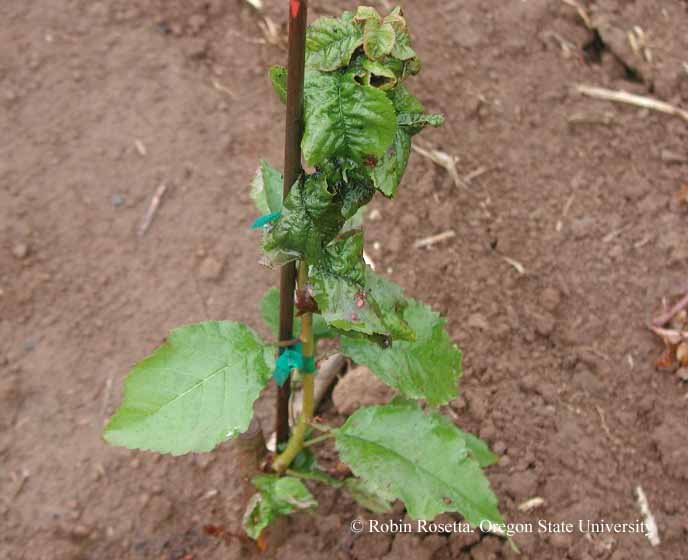The black cherry aphid, Myzus ceranus, can show up on cherry trees grown in nurseries. The images here are from 'Mazzard' cherries. Cherry trees are the primary host on which the aphids overwinter as eggs. The egg hatch is timed for bud break. The young nymphs migrate to new growth to feed. Colonies can increase rapidly. Most of the aphids move to alternate hosts by mid-summer. The secondary summer hosts are plants in the mustard family, bedstraw (Galium sp.), eyebright (Euphrasia sp.), and speedwell (Veronica spp.). Winged adults return to the cherry trees in the fall where they mate and lay overwintering eggs near buds.
The aphids range in color from dark brown to shiny black. The aphids have long dark cornicles. Damage is often indicated by severely curled leaves which house colonies of these black aphids.
Key timing for management is dormant or delayed dormant applications. These applications usually involve a dormant oil alone or combined with an insecticide. During the growing season, application becomes more challenging as the leaves curl, reducing contact. Systemic insecticides may be necessary, if that is the case. Be aware of pollinators! Even non-flowering cherry trees attract honey bees to their extrafloral nectaries. There are a range of natural enemies that help to suppress black cherry aphid populations including aphid midge larvae, hover fly larvae, lacewing larvae, lady beetles, and parasitic wasps (look for aphid mummies).
Resources:
Myzus cerasi: Black cherry Aphid. InfluentialPoints.com
Long, L. and H. Riedl. 2007. Black cherry aphid. Orchard Pest Management Online. Washington State University. <5 June 2017>
Cherry, flowering (Prunus)-Aphid. Hosts and Pests of Nursery Crops. Pacific Northwest Insect Handbook. <5 June 2017>
Black cherry aphid. UC Pest Management Guidelines. Note that pesticides listed are for orchard cherries. <5 June 2017>
Orginal publication: 8/5/16
Latest update: 6/5/2017
Author: R.L. Rosetta, Extension Nursery Integrated Pest Management, Department of Horticulture, Oregon State University
Black cherry aphid with lady beetle eggs
Leaf distortion (enation) from black cherry aphid
black cherry aphid



